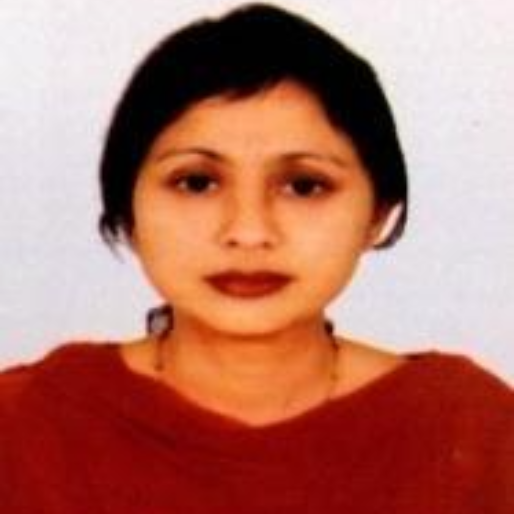International Journal of Wireless and Microwave Technologies (IJWMT)
IJWMT Vol. 11, No. 3, 8 Jun. 2021
Cover page and Table of Contents: PDF (size: 444KB)
Supporting Audio Privacy-aware Services in Emerging IoT Environment
Full Text (PDF, 444KB), PP.22-29
Views: 0 Downloads: 0
Author(s)
Index Terms
Audio privacy, IoT, PSOLA, Privacy architecture, Privacy threats analysis.
Abstract
The increasing exploration of smart space voice assistants and audio monitoring IoT devices leads to significant trust and privacy concerns. Among them, some of the data are sensitive and a user may not aware of when and where audio recordings are sent for processing. This provides burning questions- how do users gain knowledge of, and control the amount of data captured in the physical world. Moreover, the sending and processing of these sensitive data to the far cloud do not provide an efficient solution for sensitive data which causes serious privacy and security concerns. In this paper, a new architecture for providing audio transparency and privacy in the IoT-rich environment is proposed. The proposed privacy enforcement module is used to operate within a nearby fog node, which situated close to the data sources and enforces privacy according to the data owner's desire. To show the effectiveness of the proposed architecture, a well-known privacy threat framework is investigated.
Cite This Paper
Naushin Nower, " Supporting Audio Privacy-aware Services in Emerging IoT Environment", International Journal of Wireless and Microwave Technologies(IJWMT), Vol.11, No.3, pp. 22-29, 2021. DOI: 10.5815/ijwmt.2021.03.04
Reference
[1]Vormetric Data Security, “Trends in Encryption and Data Security,” (Slides). Cloud, Big Data and IoT Edition, Vormetric Data Threat Report, San Jose, CA, 2016.
[2]Al-Hasnawi, Abduljaleel, and Leszek Lilien. "Pushing Data Privacy Control to the Edge in IoT using Policy Enforcement Fog Module," Companion Proceedings of the10th International Conference on Utility and Cloud Computing, pp. 145-150, 2017.
[3]Mitev, Richard, Anna Pazii, Markus Miettinen, William Enck, and Ahmad-Reza Sadeghi. "LeakyPick: IoT Audio Spy Detector." In Annual Computer Security Applications Conference, pp. 694-705, 2020.
[4]Hossan, Sakhawat, and Naushin Nower. "Fog-based dynamic traffic light control system for improving public transport," Public Transport, vol. 12, no. 2, pp. 431-454, 2020.
[5]Bonomi, Flavio. "Connected vehicles, the internet of things, and fog computing," In The eighth ACM international workshop on vehicular inter-networking (VANET), Las Vegas, USA, pp. 13-15, 2011.
[6]Stojmenovic, Ivan. "Fog computing: A cloud to the ground support for smart things and machine-to-machine networks," In IEEE Australasian telecommunication networks and applications conference (ATNAC), pp. 117-122, 2014.
[7]H. S. Cheng, D. Zhang, J. G. Tan, “Protection of Privacy in Pervasive Computing Environments,” International Conference on Information Technology: Coding and Computing, pp. 242-247, 2005.
[8]A. R. Beresford, F. Stajano, “Location Privacy in Pervasive Computing,” Pervasive Computing, IEEE, Vol. 2(1), pp. 46-55, 2003.
[9]R. Campbell, J. Al-Muhtadi, P. Naldurg, G. Sampemane, M. D. Mickunas, “Towards Security and Privacy for Pervasive Computing,” Proceedings of International Symposium on Software Security, 2002.
[10]G. Myles, A. Friday, and N. Davies, “Preserving Privacy in Environments with Location-based Applications,” IEEE Pervasive Computing, vol. 2, no. 1, pp. 56–64, 2003.
[11]Suman Jana, Arvind Narayanan, Vitaly Shmatikov, "A Scanner Darkly: Protecting user Privacy from Perceptual Applications, " 2013 IEEE Symposium on Security and Privacy, (SP), pp. 349–363, 2013.
[12]Robert Templeman, Mohammed Korayem, David Crandall, Apu Kapadia, "Placeavoider: Steering First-Person Cameras Away from Sensitive Spaces," in: Network and Distributed System Security Symposium, NDSS, 2014.
[13]Wang, Junjue, Brandon Amos, Anupam Das, Padmanabhan Pillai, Norman Sadeh, and Mahadev Satyanarayanan. "A scalable and privacy-aware IoT service for live video analytics," In Proceedings of the 8th ACM on Multimedia Systems Conference, pp. 38-49. 2017.
[14]Zheng, Serena, Noah Apthorpe, Marshini Chetty, and Nick Feamster. "User perceptions of smart home IoT privacy," Proceedings of the ACM on Human-Computer Interaction (CSCW), pp 1-20, 2018.
[15]Oord, Aaron van den, Sander Dieleman, Heiga Zen, Karen Simonyan, Oriol Vinyals, Alex Graves, Nal Kalchbrenner, Andrew Senior, and Koray Kavukcuoglu, "Wavenet: A generative model for raw audio," arXiv preprint arXiv:1609.03499, 2016.
[16]Kortekaas, Reinier WL, and Armin Kohlrausch. "Psychoacoustical evaluation of the pitch-synchronous overlap-and-add speech-waveform manipulation technique using single-formant stimuli," The Journal of the Acoustical Society of America 101, no. 4 pp. 2202-2213, 1997.
[17]Deng, Mina, Kim Wuyts, Riccardo Scandariato, Bart Preneel, and Wouter Joosen. "A privacy threat analysis framework: supporting the elicitation and fulfillment of privacy requirements," Requirements Engineering, vol. 16, no. 1, 3-32, 2011.
